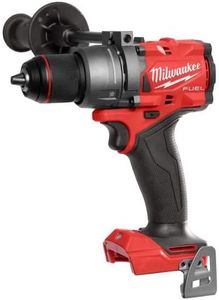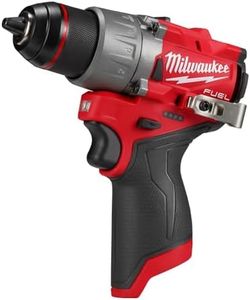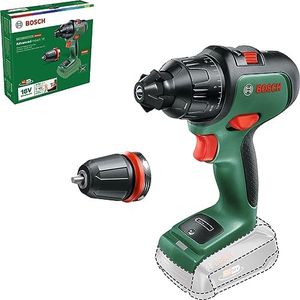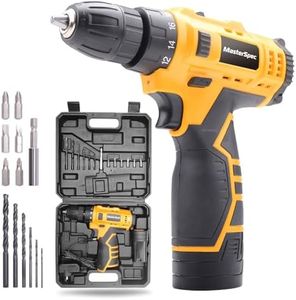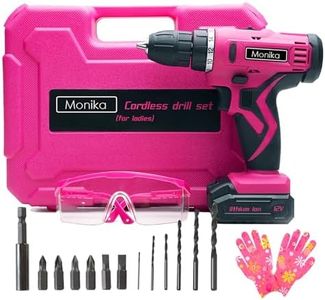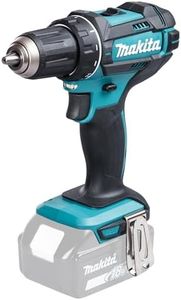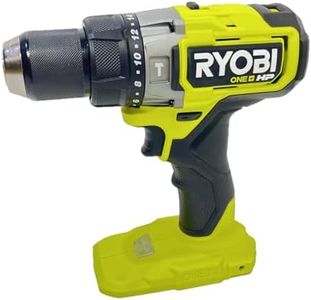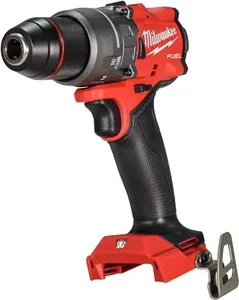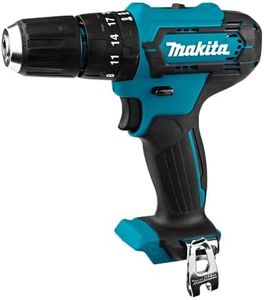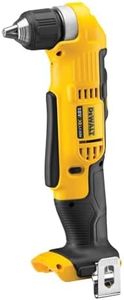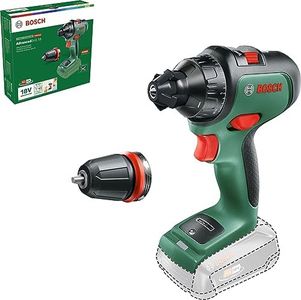We Use CookiesWe use cookies to enhance the security, performance,
functionality and for analytical and promotional activities. By continuing to browse this site you
are agreeing to our privacy policy
10 Best Lightweight Cordless Drills
From leading brands and best sellers available on the web.Buying Guide for the Best Lightweight Cordless Drills
When shopping for a lightweight cordless drill, you want to ensure you pick a tool that fits your needs, is easy to handle, and provides sufficient power for your projects. The right drill will make tasks like drilling holes or driving screws much easier, especially if you value portability and freedom from power cords. To choose the best option, it's important to understand the most critical specifications, what they mean, and how those specs relate to your intended use.WeightWeight refers to how heavy the drill is, and this is a crucial factor if you plan to use the tool for extended periods or need to work in awkward positions, such as overhead. Lightweight drills usually weigh between 2 to 4 pounds, while heavier models can go beyond that. If you need a drill for simple household tasks or long-duration projects, opt for a lighter model to prevent fatigue. For heavy-duty work where extra power is needed, a bit more weight may be acceptable.
Battery VoltageBattery voltage determines the power of the cordless drill, with common values being 12V, 18V, or 20V. Higher voltage means more power, suitable for tougher materials, but also typically increases weight. Drills with 12V are lighter and great for light tasks like furniture assembly or hanging pictures. 18V or 20V models are better for heavier work such as drilling into masonry or larger projects. Choose based on whether you'll be handling basic jobs or more demanding tasks.
Battery Type and LifeThe type of battery, most commonly Lithium-Ion (Li-Ion), impacts how long your drill lasts between charges and how fast it recharges. Li-Ion batteries are preferred for being lightweight, holding a charge for longer, and not suffering from memory effect. Battery life is measured in ampere-hours (Ah)—higher values mean longer use per charge. For occasional tasks, shorter battery life is acceptable, whereas frequent or lengthy jobs require a higher Ah rating to avoid interruptions.
Chuck SizeThe chuck is the part of the drill that holds the bits. Common sizes are 3/8-inch and 1/2-inch. Smaller 3/8-inch chucks are lighter and fit standard-sized drill bits, making them suitable for household use. Larger 1/2-inch chucks accommodate bigger bits for heavy-duty jobs but may add weight. If your work is mostly around the house, a smaller chuck will suffice; for diverse or demanding projects, a larger chuck offers more versatility.
Speed and Torque SettingsSpeed (measured in RPM) and torque (the turning force) control how fast and how powerfully the drill operates. Models with variable speed and adjustable torque let you work with different materials and fasteners safely and effectively. Low speeds with high torque are good for driving screws, while high speeds suit drilling holes. If you need a drill for multiple uses, pick one with multiple speed/torque options; for simple, repetitive tasks, a single-speed drill might be sufficient.
Ergonomics and GripErgonomics refer to how comfortable the drill is to hold and use. Factors include handle shape, grip material, and overall balance. A well-designed ergonomic grip prevents hand strain and makes it easier to control the drill, especially during long sessions. If possible, try holding the drill before buying or check for features that mention comfort and soft grips—particularly important for users with smaller hands or anyone prone to hand fatigue.
